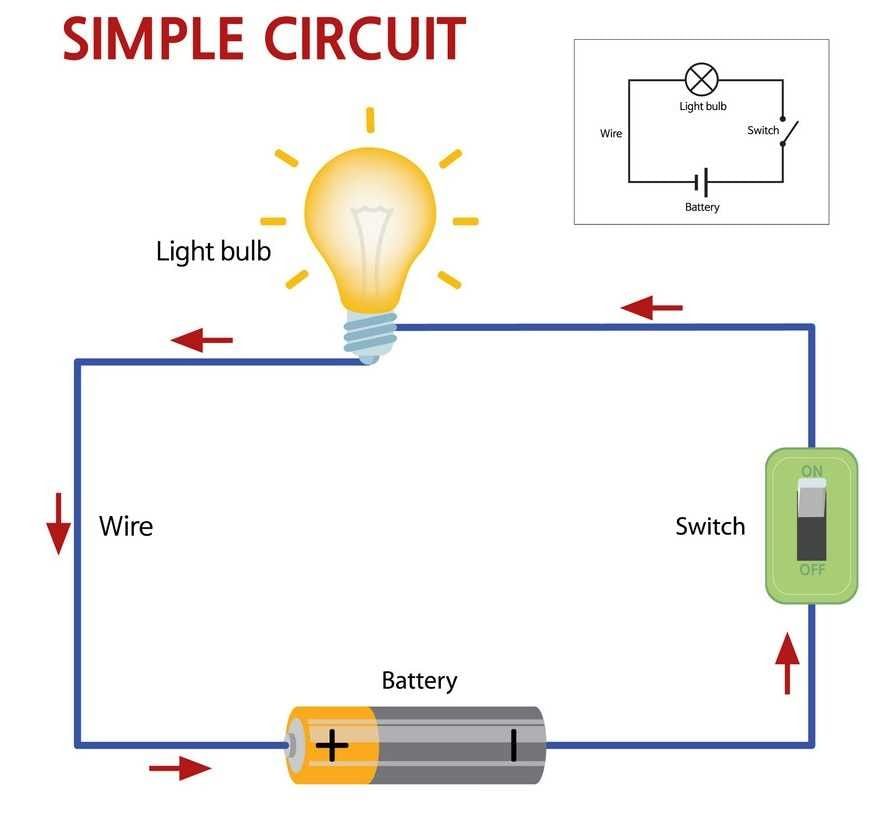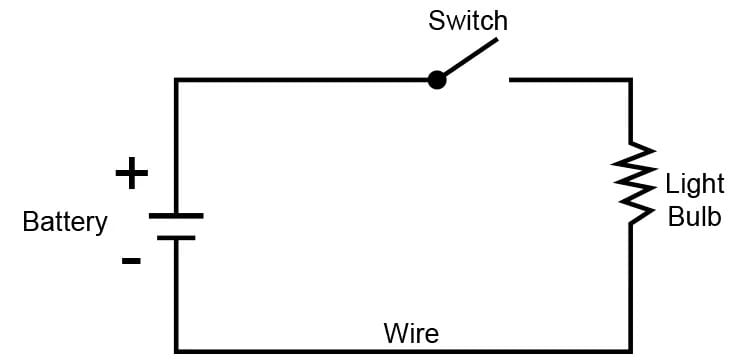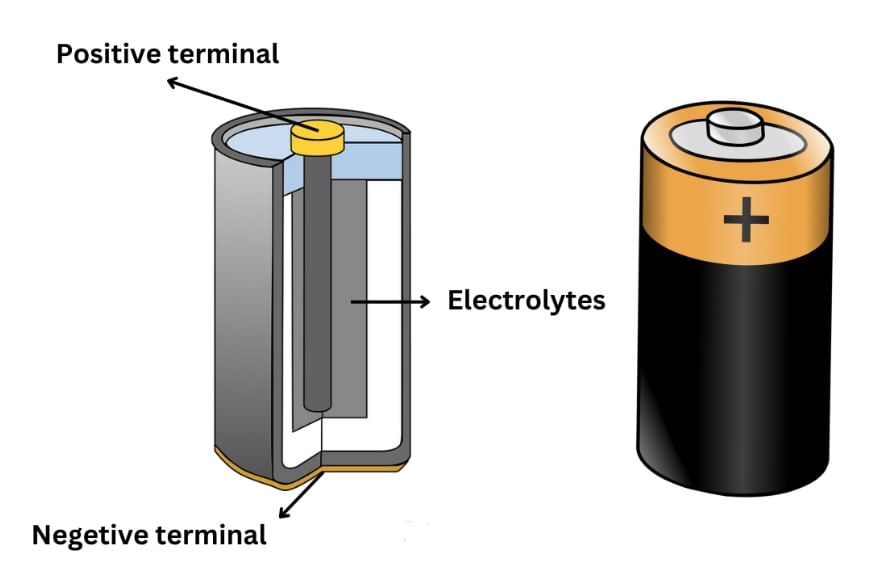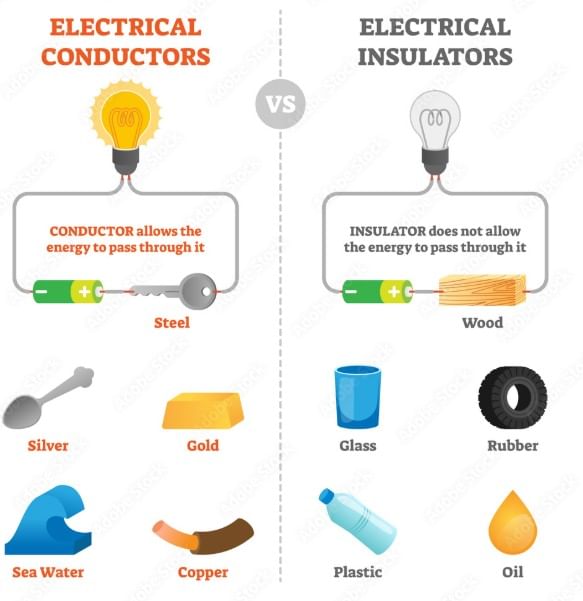Short Answer Questions:
Q1: What is a torchlight?
Answer: A torchlight is a portable device that produces light, commonly used to see in the dark. Torchlight
Torchlight
Q2: What is the function of the electric cell in a torchlight?
Answer: The electric cell provides the energy needed to make the lamp glow by allowing current to flow from the positive to the negative terminal.
Q3: How does an electric circuit work?
Answer: An electric circuit is a complete path that allows current to flow from a power source (like a cell) through a device (like a lamp) and back, making the device work.
 CircuitQ4: What is the difference between an electric cell and a battery?
CircuitQ4: What is the difference between an electric cell and a battery?
Answer: An electric cell is a single source of electrical energy, while a battery is a combination of two or more cells connected together to provide more energy.
Q5: What is an incandescent lamp?
Answer: An incandescent lamp has a filament inside that glows when electric current passes through it, producing light.
Q6: What is the function of a switch in a circuit?
Answer: A switch controls the flow of current by either completing (closing) or breaking (opening) the circuit.
Q7: What is the purpose of using insulators in electrical circuits?
Answer: Insulators prevent the flow of electric current and are used to cover wires and make switches and plugs to ensure safety.
Q8: What is a circuit diagram?
Answer: A circuit diagram is a drawing that uses standard symbols to represent the components of an electrical circuit.
 Circuit DiagramQ9: What is the role of a filament in an incandescent lamp?
Circuit DiagramQ9: What is the role of a filament in an incandescent lamp?
Answer: The filament inside the incandescent lamp glows when heated by the electric current, producing light.
Q10: What are the types of electricity used in devices?
Answer: The two main types of electricity are Direct Current (DC), used in devices like torchlights and phones, and Alternating Current (AC), used for larger appliances.
Long Answer Questions:
Q1: Explain how an electric cell works in providing energy to a device.
Answer:
- An electric cell is a source of electrical energy.
- It has two terminals: a positive (+) terminal and a negative (-) terminal.
 Electric Cell
Electric Cell
- These two terminals are connected by a circuit.
- Inside the cell, a chemical reaction occurs between the materials inside the cell.
- This chemical reaction releases electrons (tiny charged particles) that move from the negative terminal to the positive terminal, creating an electric current.
- This current flows through the wires of the circuit and powers the devices connected to it, like lamps, radios, clocks, or remote controls.
- The flow of current from the electric cell provides the energy needed for these devices to work.
Q2: Describe the structure and working of an LED lamp.
Answer:
- An LED lamp is different from traditional lamps like incandescent or fluorescent lamps.
- It does not have a filament, but instead uses a special material called a diode to produce light.
- The LED lamp has two terminals: one longer (positive terminal) and one shorter (negative terminal).
- The lamp is designed to glow when the positive terminal of the lamp is connected to the positive side of a battery or power source, and the negative terminal is connected to the negative side.
- When current flows through the LED, it moves in only one direction because LEDs only work when the current is going from the positive to the negative terminal.
- This makes LEDs more efficient, meaning they use less energy to produce light and last longer than regular bulbs.
- Since there is no filament, LED lamps are less likely to break or burn out, which makes them more durable.
Q3: How does a simple electrical circuit work to make a lamp glow?
Answer:
- A simple electrical circuit consists of a few key parts: an electric cell (like a battery), a lamp, and wires.
- When the switch in the circuit is in the "on" position, it allows electricity to flow from the positive terminal of the cell through the wires and into the lamp.
- Inside the lamp, there is a filament (a thin wire), and when electricity passes through the filament, it heats up and starts to glow.
- This produces light.
- If the switch is turned off, the circuit becomes incomplete, and the electric current cannot flow, so the lamp will not glow.
- The switch is used to either allow or stop the flow of electricity, controlling when the lamp is on or off.
Q4: What are the roles of conductors and insulators in electrical circuits?
Answer: In an electrical circuit, conductors and insulators play important roles:
 Conductors vs Insulators
Conductors vs Insulators
Conductors are materials that allow electricity to flow through them easily. Metals like copper, silver, and aluminum are good conductors. They are used in the wires that connect different parts of an electrical circuit because they let the electric current pass through them without resistance.
Insulators, on the other hand, are materials that do not allow electricity to flow. They protect us from electric shocks. Common insulators include plastic, rubber, and wood. These materials are used to cover wires, make electrical switches, and create plug tops. They make sure that the current stays inside the wires and does not harm us or cause short circuits.
In simple terms, conductors let electricity flow, while insulators keep electricity safely contained within the circuit.
Q5: Discuss the importance of switches in electrical circuits.
Answer:
- A switch is an important device in electrical circuits because it helps control the flow of electricity.
- The switch acts like a gate for the electric current.
- When the switch is in the "on" position, it closes the circuit, allowing electricity to flow through and power the connected device, such as a lamp, fan, or television.
- This makes the device work.
- When the switch is in the "off" position, it opens the circuit, which stops the flow of electricity.
- As a result, the device is turned off.
- Switches are essential for turning electrical devices on and off safely and efficiently.
- Without switches, you would have to disconnect wires every time you want to turn something off, which would be impractical and unsafe.
- Therefore, switches make electrical circuits safer and easier to use, as they give us control over the devices that run on electricity.

















